Boeing 787 Dreamliner: Pros and Cons of Flying
The Boeing 787 Dreamliner is known for its cutting-edge technology and exceptional fuel efficiency, revolutionizing long-haul air travel. This article will delve into its key features, the pros and cons of flying on it, and its broader impact on the aviation industry.
Key Takeaways
-
The Boeing 787 Dreamliner, particularly the 787-9 variant, is a groundbreaking aircraft known for its fuel efficiency, advanced composite materials, and improved passenger comfort, enabling new long-haul routes.
-
Passenger experience is significantly enhanced on the Dreamliner due to its spacious cabin design, superior air quality, and technologies that reduce turbulence, allowing for a more enjoyable and less taxing flight.
-
Despite facing safety concerns and notable incidents since its introduction, Boeing has implemented rigorous safety measures and improvements, ultimately enhancing the Dreamliner’s reliability and market presence.
Overview of the Boeing 787 Dreamliner
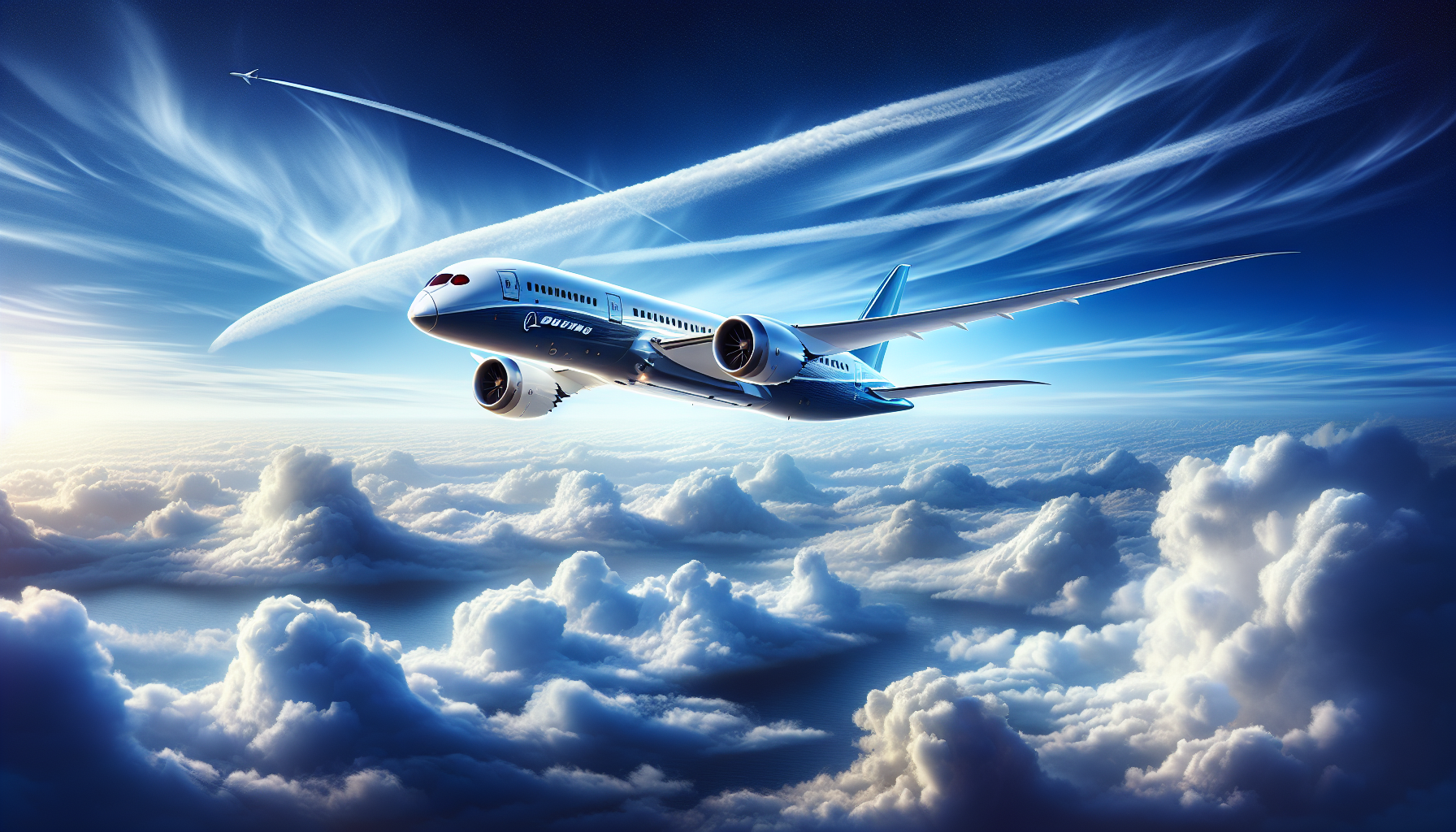
The Boeing 787, commonly known as the Dreamliner (or Boeing dreamliner), is a series of long-haul, wide-body, twin-engine jet airliners. This aircraft has significantly influenced modern aviation, primarily through its innovative features and the impact it has had on long-distance travel. The Boeing 787 is designed to be more fuel-efficient and environmentally friendly, making it a standout among its peers.
One of the key variants of this series is the Boeing 787-9, which exemplifies the advancements in aviation technology. The Dreamliner series, including the 787-9, has become a cornerstone for many airlines, allowing for new, direct routes that were previously unfeasible. This aircraft’s introduction has marked a new era in air travel, combining efficiency with enhanced passenger comfort.
Design and Innovation
The Boeing 787 Dreamliner isn’t just another aircraft; it’s a leap forward in aviation design and technology. Nearly half of the Dreamliner’s structure is made from composite materials, achieving unprecedented structural efficiency and weight reduction. This innovative approach doesn’t just enhance fuel efficiency; it also contributes to the overall performance and operational cost savings for airlines.
Boeing’s emphasis on fuel efficiency underscores its commitment to sustainable aviation. The Boeing Dreamliner incorporates advanced design features and new technologies, which collectively enhance its aerodynamics and fuel efficiency. These improvements mean that the aircraft can fly longer distances while consuming less fuel, making it a game-changer for airlines operating long-haul flights.
Composite Materials
One of the standout features of the Boeing 787 Dreamliner is its extensive use of composite materials. Unlike traditional aluminum, composite materials offer a significant reduction in weight. In fact, the Dreamliner’s structure is composed of nearly 50% composites, which translates to an average weight reduction of 20% compared to conventional designs.
This innovative use of materials doesn’t just make the aircraft lighter; it also enhances its strength and durability. The reduction in weight directly contributes to the aircraft’s improved fuel efficiency and performance, setting a new benchmark in the aviation industry.
Fuel-Efficient Engines
The Boeing 787 Dreamliner is equipped with fuel-efficient engines that are designed to offer significant improvements over previous models. These engines are capable of providing up to 20% greater fuel efficiency compared to similar aircraft. This is achieved through advanced engine technology that reduces fuel usage by up to 25%, making the Dreamliner one of the most fuel-efficient airplanes in the sky.
The reduction in fuel burn not only lowers operational costs for airlines but also minimizes the environmental impact. The Dreamliner’s reduced fuel consumption supports more sustainable aviation practices. These engines are a critical component of the aircraft’s design, contributing to its overall efficiency and performance.
Passenger Experience
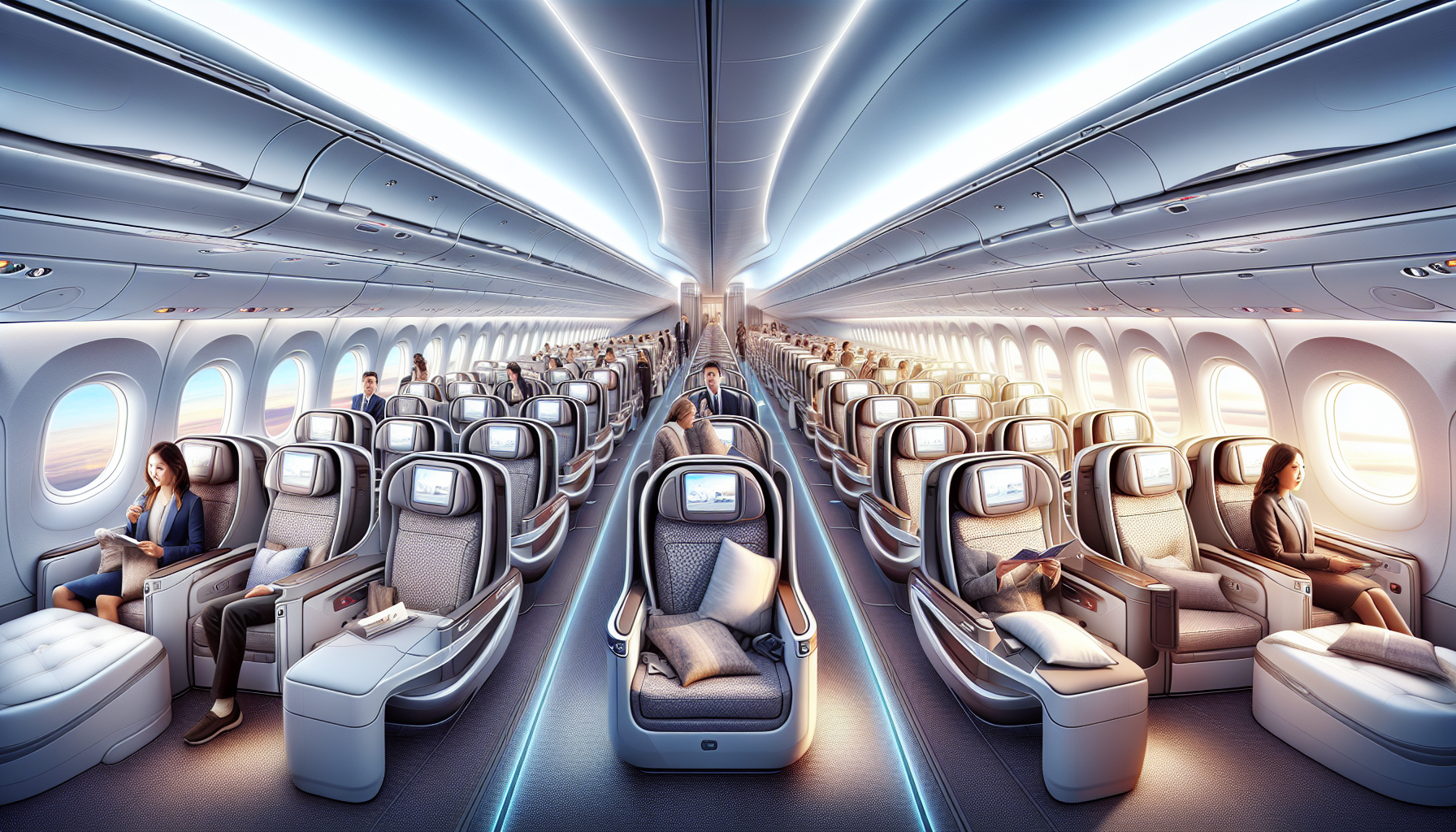
Flying on the Boeing 787 Dreamliner is an experience like no other. Passengers often report feeling more refreshed upon arrival, thanks to the aircraft’s innovative cabin environment. The Dreamliner is designed with passenger comfort in mind, incorporating features that enhance the overall flying experience.
From the spacious cabin design to improved air quality and smoother ride technology, every aspect of the Dreamliner is engineered to provide a superior passenger experience. Airlines, including American Airlines, are continually upgrading their fleet with premium-heavy cabin designs to further enhance passenger privacy and comfort, making long-haul flights more enjoyable.
Spacious Cabin Design
The Boeing 787 Dreamliner boasts a cabin design that feels more spacious than older models. This is achieved through a wider fuselage, which provides passengers with a greater sense of personal space. The wider cabin isn’t just about comfort; it also allows for larger windows, which offer panoramic views and more natural light.
Future variants of the Dreamliner, such as the 787-9, are set to include enhanced cabin amenities, including upgraded bedding and entertainment options. These improvements are based on customer preferences and are designed to make flying more comfortable and enjoyable for all passengers.
Improved Air Quality
One of the most notable features of the Boeing 787 Dreamliner is its improved air quality. The aircraft maintains higher cabin pressure, which makes passengers feel as though they are at 6,000 feet instead of the typical 8,000 feet. This reduction in effective altitude helps to minimize common in-flight discomforts such as headaches and dry eyes.
Additionally, the Dreamliner maintains higher humidity levels, which reduces dehydration and enhances overall passenger comfort. These advancements significantly improve the in-flight experience, making long-haul travel less taxing on the body.
Smoother Ride Technology
The Boeing 787 Dreamliner is equipped with advanced technology designed to deliver a smoother ride. Sensors on the aircraft actively adjust control surfaces to counteract turbulence, ensuring a more stable flight experience.
This technology greatly enhances the overall passenger experience, particularly on long flights, by reducing the impacts of turbulence.
Operational Performance
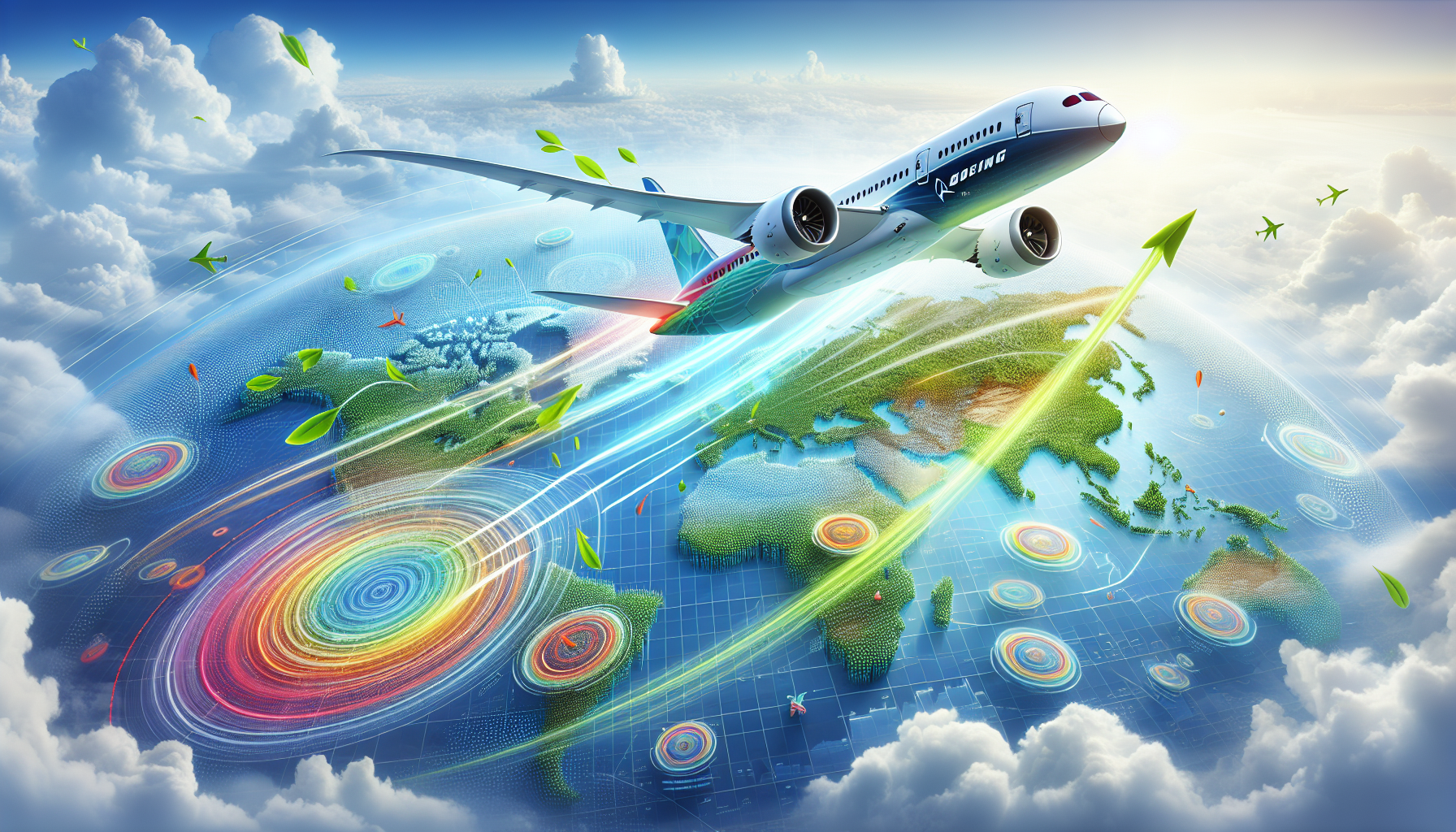
The operational performance of the Boeing 787 Dreamliner has revolutionized air travel. Its advanced technology and design features allow airlines to efficiently operate new routes, enhancing connectivity and opening up previously unviable long-haul destinations. The Dreamliner’s exceptional fuel efficiency significantly enhances operational profitability for airlines, making it a valuable asset.
Moreover, the aircraft’s advanced systems and redundancies contribute to high dispatch reliability, resulting in minimal maintenance-related groundings during service. These factors collectively make the Dreamliner a preferred choice for airlines looking to optimize their operations.
Flight Range and Efficiency
The Boeing 787-9 variant can cover distances of up to 7,565 nautical miles, accommodating around 296 passengers. This impressive flight range allows airlines to operate routes that can last up to 20 hours, making direct, long-haul flights more feasible. The aircraft’s design, which includes advanced composite materials, contributes to significant weight savings and improved fuel economy.
Innovative features like the Hybrid Laminar Flow Control (HLFC) system further enhance the Dreamliner’s fuel efficiency by reducing aerodynamic drag. Boeing continues to develop upgrades focused on fuel efficiency and passenger comfort, ensuring that the 787 remains at the forefront of aviation technology.
Reliability and Maintenance
The Boeing 787’s composite structure is less prone to fatigue and corrosion, resulting in lower maintenance needs compared to traditional aluminum aircraft. This not only reduces maintenance costs but also increases the aircraft’s operational availability. The 787-8 and -9 models are rated for a 330-minute ETOPS capability, which enhances their reliability for long-distance flights.
These features collectively contribute to the Dreamliner’s reputation for reliability and efficiency, making it a favored choice for airlines around the world. The combination of advanced materials and technology ensures that the 787 remains a leader in modern aviation.
Safety Record and Incidents
The Boeing 787 Dreamliner has faced significant safety concerns since its introduction, necessitating urgent attention to various issues. One of the most critical safety issues involved lithium-ion battery malfunctions, which led to some high-profile incidents and highlighted deficiencies in Boeing’s reliability program. Despite these challenges, Boeing has taken steps to address these issues and improve the aircraft’s safety record.
The integration of components from a wide variety of global suppliers initially complicated the overall reliability of the 787. However, Boeing’s efforts to enhance quality control and implement rigorous safety measures have significantly improved the aircraft’s performance and reliability.
Notable Incidents
Several notable incidents have marked the Boeing 787’s history, beginning with:
-
A battery-related fire in Boston involving a parked aircraft
-
A fire near the tail, which raised additional safety concerns
-
A mid-air blowout reported on Alaska Airlines Flight 1282 at 16,000 feet, further underscoring the need for stringent safety measures.
These incidents have had a significant impact on the perception of the 787’s safety, prompting Boeing to take corrective actions to restore confidence in the aircraft.
Safety Measures
In response to the safety concerns, Boeing has implemented several safety measures to enhance the Dreamliner’s reliability. After the battery-related incidents, the FAA approved a revised battery design in April 2013, which included improvements to prevent future malfunctions. Boeing has also defended the production of the 787, stating that the issues raised about safety and assembly defects have been thoroughly inspected by the FAA and do not pose current security concerns.
The advanced engine technology of the 787 also plays a crucial role in safety, reducing nitrogen oxide and carbon emissions compared to older aircraft models. Future enhancements are expected to include further improvements in battery technology and avionics systems, ensuring that the Dreamliner remains a leader in both performance and safety.
Production and Delivery
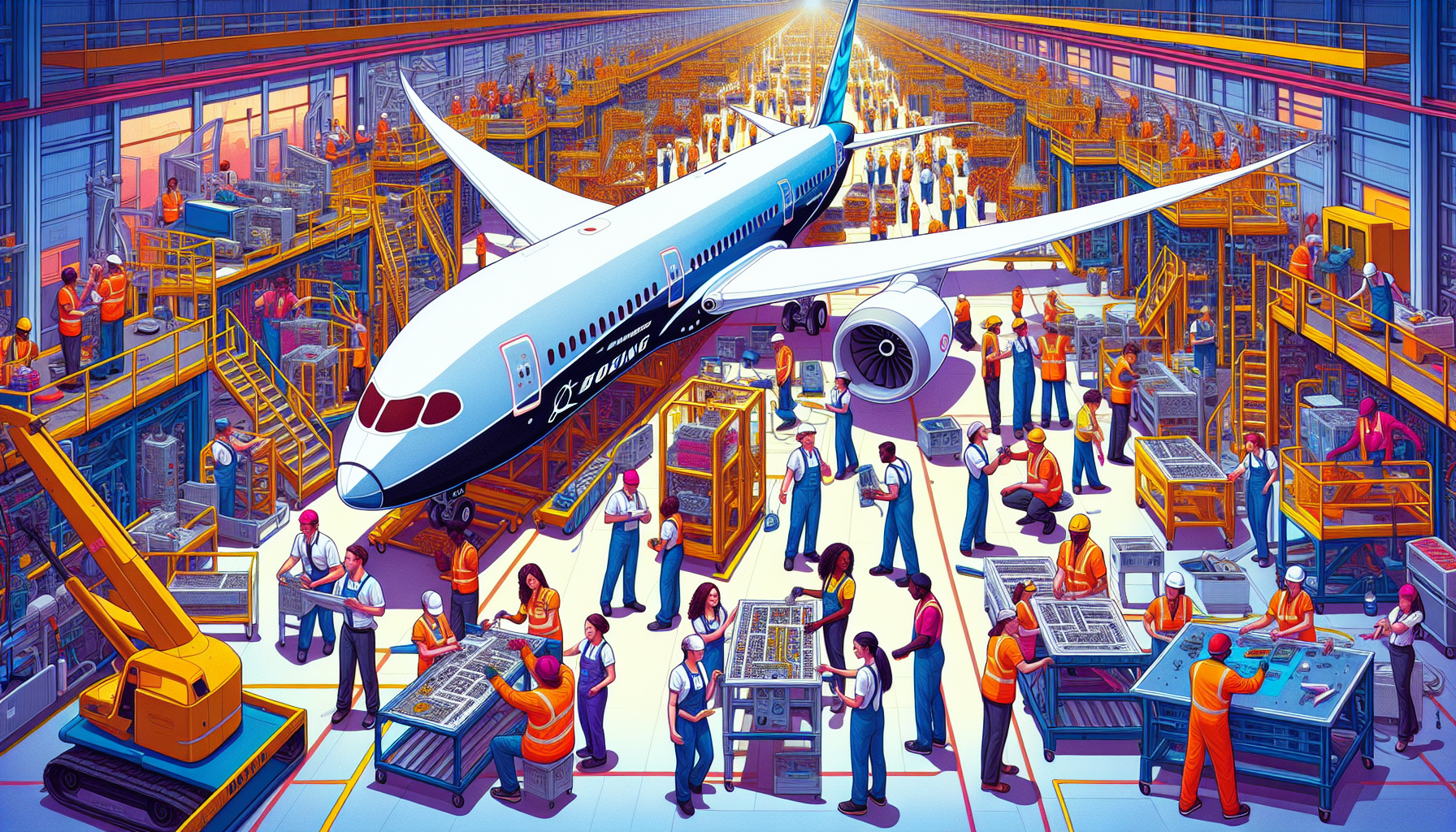
The production and delivery of the Boeing 787 Dreamliner involve a complex and innovative manufacturing process. Boeing has aimed to improve its manufacturing processes by increasing the commonality across various 787 variants, which helps streamline operations for airlines and enhances overall efficiency.
The global production line of the Dreamliner is a testament to Boeing’s innovative supply chain strategy. Outsourcing over 70% of production has enhanced Boeing’s competitiveness and market reach, enabling efficient final assembly in North Charleston, South Carolina, and Seattle, Washington.
Global Production Line
The Boeing 787 is manufactured in multiple locations around the world, with final assembly taking place in North Charleston, South Carolina, and Seattle, Washington. This global production line includes contributions from various suppliers, reflecting Boeing’s strategy to outsource a significant portion of production to enhance efficiency and market reach.
This approach has allowed Boeing to leverage the strengths of different regions and suppliers, ultimately improving the production process and enabling faster delivery times. Despite a production slowdown and challenges, this strategy has positioned the Dreamliner as a competitive and sought-after aircraft in the global market.
Delivery Milestones
All Nippon Airways (ANA) was the first airline to receive the Boeing 787 Dreamliner, marking a significant milestone in the aircraft’s commercial journey. The first flight commercial delivery occurred in September 2011, setting the stage for the Dreamliner’s entry into service and its impact on the aviation industry.
In the first quarter of 2024, Boeing delivered 13 Dreamliners, reflecting the ongoing demand and the aircraft’s importance in modern aviation. These delivery milestones highlight the Dreamliner’s success and its role in enhancing airline fleets and expanding route networks.
Market Impact and Orders
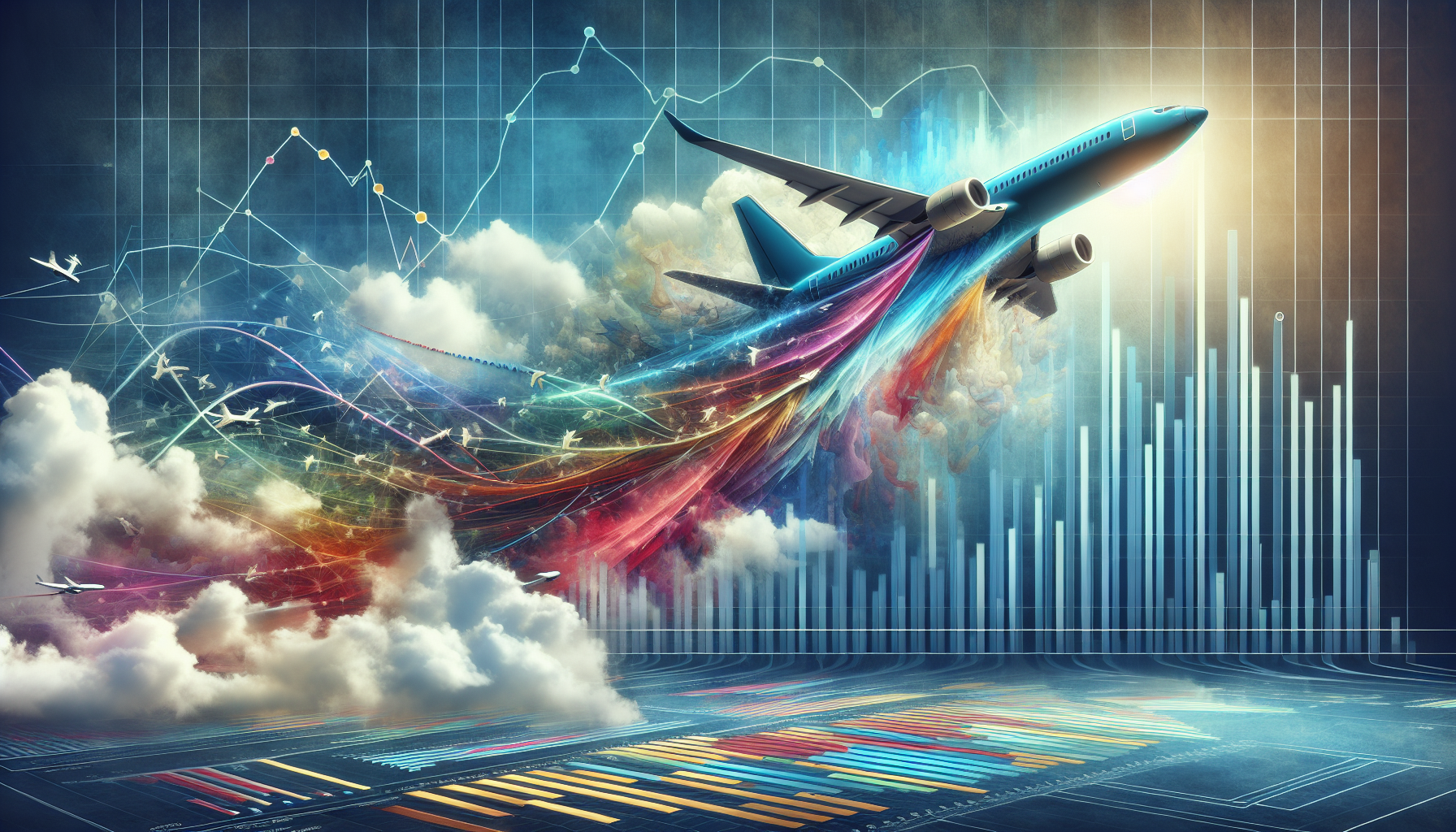
The Boeing 787 Dreamliner has had a profound impact on the airline market, with over 1,900 orders received from various airlines around the world. This strong demand showcases the confidence that airlines have in the Dreamliner as a key player in long-distance travel.
The economic impact of the Dreamliner is also significant, with the market shipment value projected to grow substantially, reflecting the aircraft’s influence on the global aviation sector. This growth underscores the Dreamliner’s role in transforming international air travel and enhancing connectivity between cities.
Order Book
Boeing has received a substantial number of orders for the 787 Dreamliner, establishing it as a cornerstone in the aviation market. As of the latest updates, the total orders stand at over 1,500 aircraft, with major airlines such as American Airlines and All Nippon Airways (ANA) contributing significantly to this number.
The massive order book demonstrates the high demand for the aircraft and underscores Boeing’s strong presence in the commercial aviation market. This demand reflects the Dreamliner’s appeal due to its advanced technology, fuel efficiency, and enhanced passenger experience.
Market Penetration
The Boeing 787 has achieved remarkable market penetration, with United Airlines holding the largest order for 221 aircraft. The diverse order book includes numerous major airlines, with significant contributions from American Airlines and All Nippon Airways (ANA).
Since its entry into service, the Dreamliner has facilitated the launch of more than 400 new nonstop routes globally. This capability has enabled airlines to operate long-haul routes more efficiently, enhancing connectivity between international destinations and transforming market dynamics.
Japan Airlines, for example, has utilized the 787 to launch new direct point to point routes from Tokyo to San Diego and Boston, highlighting the aircraft’s versatility and appeal.
Future Developments
The future of the Boeing 787 Dreamliner looks promising, with new variants and technological advancements on the horizon. Boeing is focusing on performance enhancements and additional seating capacity to meet the evolving needs of airlines and passengers.
These future developments will continue to build on the Dreamliner’s success, incorporating advanced technologies such as more efficient engines and improved aerodynamics. These enhancements are expected to further enhance the aircraft’s performance and operational efficiency.
Upcoming Variants
Potential future variants of the Boeing 787 Dreamliner may include enhancements that improve operational capabilities and expand airline route options. For instance, future Boeing 787-9 models will include a three-class cabin featuring improved business class seats with added privacy, catering to the needs of long-haul travelers.
These upgraded business class seats are expected to offer a fully flat 180-degree recline, giving passengers the flexibility to find their perfect position, whether sleeping or lounging. Adjustable features like lumbar support and footrests will further enhance comfort on extended journeys. The seats will be designed with privacy in mind—staggered layouts and thoughtful dividers will help ensure a restful and undisturbed experience.
Passengers can also look forward to more thoughtful amenities, such as plush, duvet-style blankets and improved cushions for deeper rest, along with personal power outlets, USB ports, and noise-canceling headphones. Enhanced storage, including convenient cubbies and shelves for personal items, will maximize available space. The new cabin layout aims to address previous concerns, such as limited aisle access from window seats, by introducing direct aisle access for every passenger.
These improvements are part of a broader trend among airlines to elevate the premium cabin experience, with custom bedding and upgraded pillows—details that may seem small but can have a meaningful impact on sleep quality and overall satisfaction during long-haul flights.
Technological Advancements
Future iterations of the Boeing 787 Dreamliner are expected to integrate advanced technologies to further enhance performance and efficiency. These advancements may include the use of advanced manufacturing techniques like 3D printing for producing lightweight components, contributing to overall weight reduction and efficiency improvements.
Moreover, the FAA has approved a new battery design for the Dreamliner in response to previous safety issues, ensuring that future models are even safer and more reliable.
These technological advancements will make the Dreamliner a leader in modern aviation technologies, setting new standards for performance and safety.
Summary
The Boeing 787 Dreamliner stands as a testament to modern engineering and innovation in aviation. From its advanced design and fuel-efficient engines to its enhanced passenger experience and operational performance, the Dreamliner has set a new standard for long-distance travel. The aircraft’s market impact, demonstrated by its substantial order book and the launch of new routes, underscores its significance in the aviation industry.
As we look to the future, the ongoing developments and technological advancements will ensure that the Dreamliner continues to lead the way in performance, efficiency, and passenger comfort. The Boeing 787 Dreamliner is not just an aircraft; it is a symbol of progress and a glimpse into the future of air travel.
Frequently Asked Questions
What makes the Boeing 787 Dreamliner more fuel-efficient than other aircraft?
The Boeing 787 Dreamliner is more fuel-efficient than other aircraft due to its advanced engines that deliver up to 20% greater efficiency and its extensive use of lightweight composite materials, significantly reducing fuel consumption. This combination ensures better performance and lower operating costs.
Passenger Related Questions:
How does the Boeing 787 improve passenger comfort?
The Boeing 787 improves passenger comfort with its spacious cabin, wider seats, larger windows, better air quality due to higher cabin pressure and humidity levels, and advanced technology that minimizes turbulence. These features collectively enhance the overall flying experience.
In particular, the Dreamliner’s cabin is pressurized to a lower altitude—around 6,000 feet instead of the traditional 8,000—making passengers feel less dehydrated and reducing fatigue after long-haul flights. The improved humidity levels also help prevent that parched feeling often experienced on other aircraft.
Another standout feature is the Dreamliner's larger windows. Not only are they noticeably bigger than those on older jets, but they also use special electronic tinting, allowing for fine-tuned adjustments throughout the flight. This means you can keep the shades open without bothering your seatmates, enjoy more natural light, and even help your body adjust to new time zones as the crew modifies the cabin lighting and window tint to mimic different times of day.
Additionally, the aircraft’s advanced lighting system gently transitions between colors to simulate sunrise, daylight, or nighttime, further assisting with jet lag and overall comfort. Combined, these thoughtful innovations make it easier to rest, adjust to time changes, and simply enjoy the journey with less stress and greater well-being.
Flexible Seat Adjustments for Enhanced Comfort
One of the key elements behind the Dreamliner’s exceptional passenger comfort is the versatility of its seating. Business class seats are designed to adjust in multiple ways, allowing travelers to find their ideal position for both relaxation and sleep. Whether you want to lounge with your feet raised or recline fully flat for a restful night, the intuitive controls make it easy to personalize your space.
The generous seat width and plush cushion work together to eliminate discomfort, even on the longest flights. With a true lie-flat feature, passengers can stretch out completely, transforming their seat into a comfortable bed. This thoughtful design, complemented by cozy duvet-style blankets, ensures that you arrive feeling genuinely refreshed.
For added convenience, there are well-placed storage compartments for personal items and accessible power outlets for electronic devices. Enhanced lumbar support and a variety of adjustable settings further allow travelers to tailor the seat to their unique preferences, making long-haul journeys both restful and restorative.
Modernized Bathroom Features
The Boeing 787 Dreamliner takes restroom design up a notch with thoughtful, passenger-centric touches you’ll actually notice at 35,000 feet. In contrast to older aircraft lavatories, the Dreamliner features spacious, modern bathrooms that focus on both hygiene and convenience.
Perhaps the most appreciated upgrade is the inclusion of touch-free sinks and flush mechanisms—meaning you’re less likely to pick up any unwelcome germs during your journey. This small but significant innovation makes for a cleaner, more hygienic environment, and frankly, sets a new standard that most travelers agree should be adopted fleet-wide.
You’ll also find enhanced lighting, sleeker finishes, and larger mirrors, all designed to make the space feel more comfortable and user-friendly. These upgrades contribute to the overall sense of comfort and serenity that defines the Dreamliner experience.
In-Flight Entertainment in Business Class
Passengers flying business class on the Boeing 787 Dreamliner can look forward to a range of entertainment options designed with comfort and convenience in mind. Each seat is equipped with a generous 15-inch personal screen, offering a robust library of blockbuster movies, TV series, documentaries, and music from top entertainment providers. Whether you’re in the mood for the latest action flick or want to catch up on beloved sitcoms, there’s something to enjoy as you settle into your lie-flat seat.
Control of the entertainment system is flexible: you can navigate content either via the responsive touch screen or a convenient handheld remote, ensuring that your preferences are always at your fingertips—even when you’re reclined and relaxing.
However, one aspect to note is the absence of privacy screens on these monitors. While the oversized displays provide crisp visuals, the lack of privacy filters means that passengers seated nearby may catch glimpses of your chosen programming—particularly noticeable in a dimmed cabin. For those sensitive to light or who value a more private viewing experience, this can be a minor drawback. Still, with the cozy atmosphere and wide content selection, most travelers find it easy to tune out distractions and enjoy a restful journey.
In-Seat Amenities
Each BusinessFirst seat on the Boeing 787-9 is thoughtfully equipped to keep travelers connected and comfortable throughout their journey. Passengers have access to a universal personal power outlet and a convenient USB port at their seat, making it easy to charge laptops, smartphones, or tablets during the flight.
For entertainment, noise-canceling headphones are provided, designed to deliver clear audio and minimize cabin noise. There’s also flexibility for those who prefer to use their own headphones—just note that while the standard single-pin jack works, using the airline-provided headphones takes full advantage of the aircraft’s audio system. These amenities ensure that every passenger arrives refreshed, entertained, and with all their devices ready to go.
Meal Quality and Options on Long-Haul Flights
While the Boeing 787 Dreamliner emphasizes passenger comfort through its cabin design and onboard technology, meal quality and selection can still be a mixed bag, especially depending on the airline and route. On many international carriers, even economy passengers often find themselves pleasantly surprised by flavorful and well-balanced meals—sometimes even on short domestic routes. Airlines such as Singapore Airlines, ANA, and Emirates frequently receive praise for providing a diverse menu with choices that cater to a variety of dietary needs, including vegetarian and vegan options.
However, the experience can vary. Some U.S.-based airlines may offer less impressive culinary options, particularly for special meal requirements. For example, vegetarians might find limited choices, sometimes receiving just basic cold cereal and fruit for breakfast, rather than a more substantial hot selection. Special dietary requests—such as vegan or gluten-free meals—are generally available, but quality and creativity can differ greatly. While some airlines work with culinary partners to develop appealing menus, others have room for improvement, occasionally serving underwhelming main courses or poorly labeled dishes.
That said, a few bright spots stand out. Classic pre-meal snacks like warm roasted nuts are often crowd-pleasers in premium cabins, and some long-haul flights provide a greater range of fresh fruit, salads, and snacks between meals. Savvy travelers frequently bring along a favorite snack or two, just in case the inflight menu misses the mark—especially on longer journeys. For those with specific dietary needs or high culinary expectations, it’s always a good idea to review menu options before flying and pack a backup snack for peace of mind.
Window vs. Aisle Seats in Business Class: Pros and Cons
Choosing between a window seat and an aisle seat in business class comes down to your personal travel style and comfort preferences.
Window seats offer unbeatable views and a sense of privacy—ideal for travelers who enjoy gazing out at the clouds or leaning against the fuselage for some extra rest. These seats can feel especially cozy, making it easier to relax or doze off during a long-haul flight. However, the main drawback is access: if you’re seated by the window, you’ll need to navigate around your seatmate to reach the aisle, which can be inconvenient, especially if they’re fully reclined or sleeping.
Aisle seats, on the other hand, make it effortless to get up and stretch, visit the lavatory, or access the overhead bins without disturbing others. For passengers who value freedom of movement or anticipate getting up frequently, the aisle is the clear winner. The trade-off, though, is that you might have to get up when your neighbor needs to pass, and you’ll miss out on the extra privacy afforded by the window spot.
Ultimately, business class seats on modern aircraft like the Dreamliner are designed to maximize comfort, with features such as fully flat beds, plush duvets, and adjustable seating positions, helping ensure a restful flight no matter which seat you choose. The right seat for you depends on whether you prize easy access or the tranquility of a window view.
Business Class Amenities Kits
Passengers flying business class on the Boeing 787 Dreamliner are treated to thoughtfully curated amenities kits that make long-haul travel more enjoyable. These kits often come in stylish, collectible cases—sometimes themed for special events—and are packed with everything you need to freshen up during your journey.
Typical contents include premium skincare items such as moisturizing lotion and nourishing lip balm from renowned brands like Cowshed Spa, a soft cloth eye mask for restful sleep, and practical essentials such as a toothbrush, toothpaste, and earplugs. Socks with subtle patterns and other comfort items, like facial tissues and a comb, are also usually included.
A standout feature in the business class cabin is the attention to personal comfort and hygiene. The Dreamliner is equipped with touch-free bathroom sinks and toilets, elevating the in-flight experience and setting a new standard for cleanliness and convenience at 35,000 feet.
What are some of the notable safety incidents involving the Boeing 787?
Notable safety incidents involving the Boeing 787 include a battery-related fire in Boston and a mid-air blowout on Alaska Airlines Flight 1282, which led to rigorous safety measures and a revised battery design approved by the FAA. These incidents highlight the importance of continuous safety improvements in aviation.
How has the Boeing 787 impacted the airline market?
The Boeing 787 has transformed the airline market by allowing airlines to launch new nonstop routes and improve international connectivity. Its widespread adoption, with over 1,900 orders, has reshaped long-distance travel dynamics.
What future developments can we expect for the Boeing 787?
We can expect new variants of the Boeing 787 that offer enhanced performance, increased seating capacity, and advancements such as more efficient engines and improved aerodynamics, keeping it competitive in the aviation market. These developments will solidify the Dreamliner's position as a leader in modern air travel.
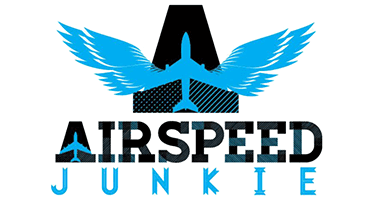







1 comment
Sefker pjetrovic
This year I flew from Casablanca to JFK, and Vienna to Newark, I experienced the worst seeds that I ever flew. They are very small.